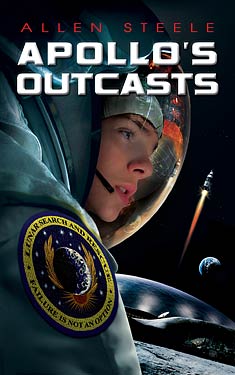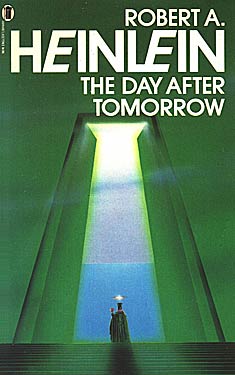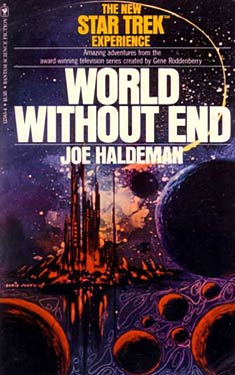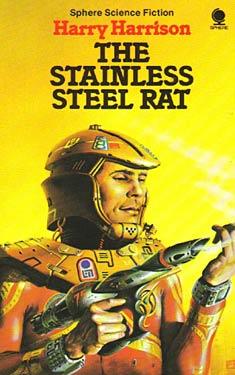WoGF Review: This Alien Shore by C. S. Friedman
 Carl V. Anderson (Carl V.) operates Stainless Steel Droppings, a blog dedicated to books, film, games and trail running. Be sure to check out his 2013 Science Fiction Experience reading challenge. Carl can also be found on a semi-regular basis posting reviews and interviews for SF Signal.
Carl V. Anderson (Carl V.) operates Stainless Steel Droppings, a blog dedicated to books, film, games and trail running. Be sure to check out his 2013 Science Fiction Experience reading challenge. Carl can also be found on a semi-regular basis posting reviews and interviews for SF Signal.
Editor’s Note: this review counts for November.
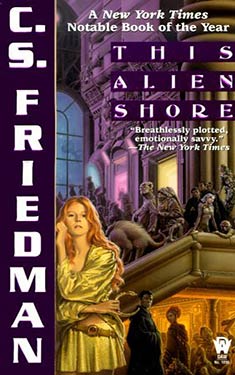 It is the second stage of human colonization–the first age, humanity’s initial attempt to people the stars, ended in disaster when it was discovered that Earth’s original superluminal drive did permanent genetic damage to all who used it–mutating Earth’s far-flung colonists in mind and body. Now, one of Earth’s first colonies has given humanity back the stars, but at a high price–a monopoly over all human commerce. And when a satellite in earth’s outer orbit is viciously attacked by corporate raiders, an unusual young woman flees to a ship bound for the Up-and-Out. But her narrow escape does not mean safety. For speeding across the galaxy pursued by ruthless, but unknown adversaries, this young woman will discover a secret which is buried deep inside her psyche–a revelation the universe may not be ready to face….
It is the second stage of human colonization–the first age, humanity’s initial attempt to people the stars, ended in disaster when it was discovered that Earth’s original superluminal drive did permanent genetic damage to all who used it–mutating Earth’s far-flung colonists in mind and body. Now, one of Earth’s first colonies has given humanity back the stars, but at a high price–a monopoly over all human commerce. And when a satellite in earth’s outer orbit is viciously attacked by corporate raiders, an unusual young woman flees to a ship bound for the Up-and-Out. But her narrow escape does not mean safety. For speeding across the galaxy pursued by ruthless, but unknown adversaries, this young woman will discover a secret which is buried deep inside her psyche–a revelation the universe may not be ready to face….
I don’t often post book copy in a review, but This Alien Shore, a 1998 novel that was listed as a New York Times Notable Book of the Year, is a layered, character-heavy novel that has so much going on that the prepared synopsis gives a nice foundation from which to build a review.
WoGF Review: The Mad Scientist’s Daughter by Cassandra Rose Clarke
 Carl V. Anderson (Carl V.) operates Stainless Steel Droppings, a blog dedicated to books, film, games and trail running. Be sure to check out his 2013 Science Fiction Experience reading challenge. Carl can also be found on a semi-regular basis posting reviews and interviews for SF Signal.
Carl V. Anderson (Carl V.) operates Stainless Steel Droppings, a blog dedicated to books, film, games and trail running. Be sure to check out his 2013 Science Fiction Experience reading challenge. Carl can also be found on a semi-regular basis posting reviews and interviews for SF Signal.
“Many years later Cat still remembered the damp twilight on her skin and the way the dewy grass prickled and snapped beneath her bare feet as she ran up to the edge of the forest that surrounded her home.”
How could she possibly forget that firefly-lit night, the night she sneaked up to the screened-in porch to find a stranger sitting there with her father? An inquisitive child, Cat quickly overcame her shyness and was soon introduced to Finn, a being she would later grow to understand was an android. But before that understanding came Finn would be settled in to the family primarily as an assistant to Cat’s father, Dr. Novak, an expert in the field of cybernetics, and secondarily as a tutor to young Cat. Yes, that was a special night, a night that would not fade from her memory, for that night which started out like any other ordinary night would be the night that changed Cat’s world forever.
There was no hesitation on my part when I first read of Cassandra Roses Clarke‘s upcoming novel, The Mad Scientist’s Daughter, a few weeks ago. I promptly made an appointment with myself to be at my local bookstore on the day of its release. When they did not have it I just as promptly ordered it for the Kindle–there was to be no waiting. I read 49% of the novel that first night (at the risk of outing myself as an uber-nerd I must admit the percentage read feature is one of the things I love best about Kindle reading). I had not previously read anything by Ms. Clarke nor had I sought out any early reviews of this work. The novel’s tag line was enough for me. I am very fond of robot stories. Beyond the fascination I have with the dreamed up creations of folks like Isaac Asimov all the way across the spectrum to the very real and intriguing robot Curiosity that is at this very moment fulfilling its functions on the surface of Mars, I like robots because their examination in story often reflects back profound truths about humanity. This is what I expected Cassandra Rose Clarke to deliver and she did not disappoint.
WoGF Review: Dragonflight by Anne McCaffrey
 Carl V. Anderson (Carl V.) operates Stainless Steel Droppings, a blog dedicated to books, film, games and trail running. Be sure to check out his 2013 Science Fiction Experience reading challenge. Carl can also be found on a semi-regular basis posting reviews and interviews for SF Signal.
Carl V. Anderson (Carl V.) operates Stainless Steel Droppings, a blog dedicated to books, film, games and trail running. Be sure to check out his 2013 Science Fiction Experience reading challenge. Carl can also be found on a semi-regular basis posting reviews and interviews for SF Signal.
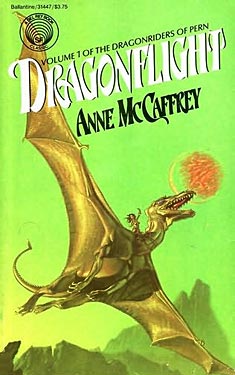 Who wills,
Who wills,
Can.
Who tries,
Does.
Who loves,
Lives.
Dragonflight. The iconic Michael Whelan image of a woman triumphantly astride a magnificent winged beast in flight has been imprinted upon my imagination for decades. Anne McCaffrey‘s two award-winning novellas–“Weyr Search” and “Dragonrider”–were combined into one cohesive novel four months prior to my birth. Around the time I became cognizant of “science fiction” as a genre I can recall seeing this cover image amongst my uncle’s collection of SF paperbacks. I borrowed heavily from those shelves in my formative years but never picked up Anne McCaffrey’s much-lauded novel.
I think it was because of the dragons.
*Cue cries of incredulity*
The two Stars, Trek and Wars, informed most of what I read in those early years and this did not look like “science fiction”. Where were the space ships? Where were the stars? It was many years later that I developed a nearly equal passion for fantasy and by that time the thought of reading this had passed me by.
Apollo’s Outcasts by Allen Steele
On his blog Stainless Steel Droppings blogger Carl V. Anderson reviews SF/F books and movies, conducts author interviews and even hosts his own reading challenge: The 2012 Science Fiction Experience.
“On my sixteenth birthday, I went to the Moon.”
This isn’t the way it is supposed to be. Turning sixteen should be a special, memorable time for any teenager. It should be unforgettable. And for Jamey Barlowe, it was. In the early hours of the morning of his sixteenth year Jamey and his two older sisters are unceremoniously awoken by their father and rushed out of their home under cover of darkness. In the midst of the chaos and confusion the children are able to discover that the President of the United States is dead, an incident that is being reported as an assassination and the Vice President, Lina Shapar, is calling for the detainment of a group of American citizens that she believes may have had a part to play in the President’s death, a group that includes Jamey Barlowe’s father.
Jamey Barlowe was born on the moon. As a result he suffers from a condition that has left him crippled for the majority of his life. If Jamey ever dreamed of returning to the place of his birth it was not like this. But for Jamey and the five other young people leaving with him, this isn’t a time for dreaming, it is a time for cold hard reality. Their destination is Apollo, a mining colony on the Moon, and although they are being sent their for their own protection they will soon discover that safety is all a matter of perspective and the Moon holds harsh challenges for each and every one of them.
GMRC Review: Ensign Flandry by Poul Anderson
 On his blog Stainless Steel Droppings blogger Carl V. Anderson reviews SF/F books and movies, conducts author interviews and even hosts his own reading challenge: The 2012 Science Fiction Experience. This is Carl’s sixth GMRC review to feature in our blog.
On his blog Stainless Steel Droppings blogger Carl V. Anderson reviews SF/F books and movies, conducts author interviews and even hosts his own reading challenge: The 2012 Science Fiction Experience. This is Carl’s sixth GMRC review to feature in our blog.
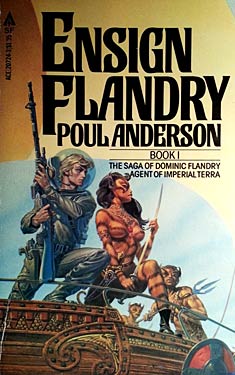 Poul Anderson is one of the authors I chose earlier this year as part of the Grand Master Reading Challenge hosted by Worlds Without End. Anderson was a prolific author whose career spanned many decades and consequently many eras of science fiction so I was unsure exactly where to start. I had toyed with the idea of starting with his Flandry series though the covers of the more recent collected editions tended to make me think these might be like the oversexed wish-fulfillment of Heinlein’s later years. I did not want that. When I saw this Michael Whelan cover for the first novel in the series my hopes rose and I decided to go ahead and snag the book for its cover, hoping that when I got around to reading it I would not be disappointed.
Poul Anderson is one of the authors I chose earlier this year as part of the Grand Master Reading Challenge hosted by Worlds Without End. Anderson was a prolific author whose career spanned many decades and consequently many eras of science fiction so I was unsure exactly where to start. I had toyed with the idea of starting with his Flandry series though the covers of the more recent collected editions tended to make me think these might be like the oversexed wish-fulfillment of Heinlein’s later years. I did not want that. When I saw this Michael Whelan cover for the first novel in the series my hopes rose and I decided to go ahead and snag the book for its cover, hoping that when I got around to reading it I would not be disappointed.
Guess what? I was not disappointed, not by a long shot.
My first foray into one of Poul Anderson’s created universes proved to be one filled with rip-roaring adventure, political intrigue, Bond-style romance and not a little bit of commentary on the soul-blackening compromise of world, or in this case Imperial, government. Ensign Flandry not only provided me with some of the everyman-hero-overcoming-all-odds storytelling I was hoping for but was also full of surprises.
GMRC Review: The Day After Tomorrow by Robert A. Heinlein
 On his blog Stainless Steel Droppings blogger Carl V. Anderson reviews SF/F books and movies, conducts author interviews and even hosts his own reading challenge: The 2012 Science Fiction Experience. This is Carl’s fifth GMRC review to feature in our blog.
On his blog Stainless Steel Droppings blogger Carl V. Anderson reviews SF/F books and movies, conducts author interviews and even hosts his own reading challenge: The 2012 Science Fiction Experience. This is Carl’s fifth GMRC review to feature in our blog.
6 Men–against 400,000,000
So the dramatic language of the back cover states, a battle against impossible odds, “the adventures of a handful of soldiers of the future, fighting to save America from a deadly invasion”.
Major Ardmore has just arrived at the secret location of a small scientific enclave as the news is broken that the United States has been summarily defeated by a combined Japanese/Chinese force referred to in this undisclosed future as the PanAsians. In an effort to stay protected from the spread of communism in Russia the United States had spent decades essentially ignoring the world outside its borders only to see Europe fall and the red menace coalesce the Asian and Indian continents into a juggernaut of world power. The PanAsians look upon the Americans as a lower species and with superior forces occupy and enslave the American people, creating a system in which the citizens of the United States are by and large an impotent and cowed populace.
Ardmore arrives to find that this group of scientists has discovered, through an accident of testing, a weapon that may provide the key to the return of freedom to the nation. That is, if Major Ardmore can marshal this 6-person team into a strategic force to infiltrate and reclaim America.
GMRC Review: Star Born by Andre Norton
 On his blog Stainless Steel Droppings blogger Carl V. Anderson reviews SF/F books and movies, conducts author interviews and even hosts his own reading challenge: The 2012 Science Fiction Experience. This is Carl’s fourth GMRC review.
On his blog Stainless Steel Droppings blogger Carl V. Anderson reviews SF/F books and movies, conducts author interviews and even hosts his own reading challenge: The 2012 Science Fiction Experience. This is Carl’s fourth GMRC review.
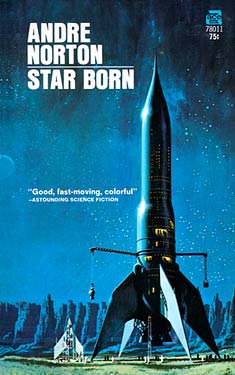 Star Born packs quite a lot of storytelling punch in its brief 187 pages. Andre Norton’s 1957 story examines such issues as slavery, racial prejudice, apocalyptic warfare and governmental oppression and wraps it all up in the kind of adventure-filled story that was a pleasure to read as an adult and would have had me gazing heavenward as a child. Star Born is an example of fine world-building and classic space adventure that remains accessible and surprisingly relevant 55 years after its release.
Star Born packs quite a lot of storytelling punch in its brief 187 pages. Andre Norton’s 1957 story examines such issues as slavery, racial prejudice, apocalyptic warfare and governmental oppression and wraps it all up in the kind of adventure-filled story that was a pleasure to read as an adult and would have had me gazing heavenward as a child. Star Born is an example of fine world-building and classic space adventure that remains accessible and surprisingly relevant 55 years after its release.
At the beginning of Norton’s novel we are introduced to Dalgard, the progeny of members of a generation ship who escaped an oppressive government on Earth (Terra) and fled to the planet Astra in hopes to make a new start. Dalgard is traveling with Sssuri, a member of a sea-born race affectionately referred to as mermen, and merwomen. Dalgard and Sssuri are traveling together, examining the ruins of a race of beings who at one time brought destructive warfare to Astra and who are rumored to be returning to reclaim the advanced technology that would once again make them a formidable enemy. Through the buddy story of Dalgard and Sssuri the reader learns much of the history of both Terra and Astra as well as learning about the culture of the people indigenous to Astra and that of the colonists who long ago landed there.
GMRC Review: World Without End by Joe Haldeman
 On his blog Stainless Steel Droppings blogger Carl V. Anderson reviews SF/F books and movies, conducts author interviews and even hosts his own reading challenge: The 2012 Science Fiction Experience. This is Carl’s third GMRC review.
On his blog Stainless Steel Droppings blogger Carl V. Anderson reviews SF/F books and movies, conducts author interviews and even hosts his own reading challenge: The 2012 Science Fiction Experience. This is Carl’s third GMRC review.
After a month of benchmark tests Captain James T. Kirk is bored. He laments the lack of “action”, something the crew silently disagrees with. As things are wont to happen in the Star Trek universe, Kirk soon gets the action he seeks in the form of the discovery of an ancient generation ship, a Bussard ramjet-powered vessel in the shape of a large planet. Scans indicate that roughly a million lifeforms live within this spherical planet that has been traveling for roughly 3,000 years. The Enterprise crew also discovers that the ship is in its braking phase and will eventually end up in a location that could not have originally been planned, for it will cost everyone on board their lives. So what is a Federation crew to do? Why beam down into the planet, of course!
After a test to ensure that the transporters will function properly, Captain Kirk, Dr. Leonard “Bones” McCoy, and a small team beam inside the planet only to discover that the metal which encases this ship will not allow them to beam out. With the use of their language translator they soon make contact with the natives, a roughly humanoid species that can fly thanks to membranous wings. This race, the Chatalia, have no knowledge that they are inside any kind of ship, label Kirk and crew as ‘magicians’ and ‘blasphemers’, and take them captive. Circumstances mount upon circumstances and the crew within this world as well as those remaining in the Enterprise soon find themselves in a race against time for their very survival. For the Chatalia have met beings like humans before, beings arrived in violence and murdered many Chatalia before finally being subdued. And it just so happens that the Federation crew is very familiar with the people the Chatalia believe them to be a part of… the Klingon Empire.
Throughout the novel there is evidence of Haldeman‘s strengths as an author. First off he wastes no time “introducing” these characters. By 1979 the cast of the original Star Trek series were well known to the fans. Instead he reveals his solid knowledge of who these characters are by their actions and dialogue which are spot on, especially for Kirk, Spock and McCoy. One of the treats of the original series is the banter between Spock and McCoy and here it is done to perfection. The humor is wry and present in just the right measure to entertain without any degree of overkill. Haldeman avoids many of the things that are now cliche in Star Trek stories, including the inevitable demise of any “redshirt” crew members. Much of the focus is on the caste system of the Chatalian peoples, including a very interesting custom in which members of different classes speak different languages and only communicate with other classes by means of an interpreter. Haldeman builds a complex world system, works in ideas of cloning and advanced intelligence, and throws in a measure of “science”.
 Where the novel stumbles is in its attempt to do too much in too little space, something that I actually give Haldeman credit for trying to pull off. In the end the length of the novel (148 pages) inhibits some of the storytelling because situations have to be resolved quickly. In that respect it actually has some of the same structural flaws as trying to fit a complex adventure into an hour television block (less when factoring in commercials). That does not keep the novel from being entertaining. Three simultaneous storylines: the crew in the planet, the crew on the Enterprise, and a crew of Klingon warriors make for an exciting story, coupled with Haldeman’s skill in rendering characters that are beloved to many make for a novel worth reading.
Where the novel stumbles is in its attempt to do too much in too little space, something that I actually give Haldeman credit for trying to pull off. In the end the length of the novel (148 pages) inhibits some of the storytelling because situations have to be resolved quickly. In that respect it actually has some of the same structural flaws as trying to fit a complex adventure into an hour television block (less when factoring in commercials). That does not keep the novel from being entertaining. Three simultaneous storylines: the crew in the planet, the crew on the Enterprise, and a crew of Klingon warriors make for an exciting story, coupled with Haldeman’s skill in rendering characters that are beloved to many make for a novel worth reading.
To summarize: In this, Haldeman’s second Star Trek novel, he demonstrates a deft touch in capturing the essence of these characters while crafting an adventure more complex than what Roddenberry and company could manage in a one hour television show. The novel stumbles at times, mostly due to the attempt to combine intricacy in plot and brevity in novel length, but overall it is an entertaining volume in the lore of Captain Kirk and the starship Enterprise.
GMRC Review: Hunt the Space-Witch!
 Editor’s Note: On his blog Stainless Steel Droppings blogger Carl V. Anderson reviews SF/F books and movies, conducts author interviews and even hosts his own reading challenge: The 2012 Science Fiction Experience. This is Carl’s second Grand Master review already, after The Stainless Steel Rat, and it’s a doozy!
Editor’s Note: On his blog Stainless Steel Droppings blogger Carl V. Anderson reviews SF/F books and movies, conducts author interviews and even hosts his own reading challenge: The 2012 Science Fiction Experience. This is Carl’s second Grand Master review already, after The Stainless Steel Rat, and it’s a doozy!
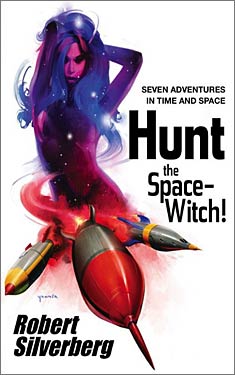 I first became aware of this collection of pulp-era short stories by author Robert Silverberg while perusing the internet last fall. The moment I saw Kieran Yanner’s dynamic retro cover I knew this book would have to be mine. I was reminded of the book when posting about my favorite SFF covers from books published in 2011 and promptly ordered a copy. Over the last two days I have immersed myself in the world of pulp-era science fiction and in so doing have discovered the talent that later propelled author Robert Silverberg to Grand Master status.
I first became aware of this collection of pulp-era short stories by author Robert Silverberg while perusing the internet last fall. The moment I saw Kieran Yanner’s dynamic retro cover I knew this book would have to be mine. I was reminded of the book when posting about my favorite SFF covers from books published in 2011 and promptly ordered a copy. Over the last two days I have immersed myself in the world of pulp-era science fiction and in so doing have discovered the talent that later propelled author Robert Silverberg to Grand Master status.
Pulp-era stories are all too often written off as something of inferior quality and in many ways in a best case scenario the term “pulp” has come to be synonymous with nothing more than guilty pleasure reading. I suspect that there is a great deal of merit in that. Common sense would dictate that in the heyday of pulp magazines publishers were cranking out magazines as fast as they could and authors were expected to follow a formula, write quickly, and be as prolific as possible if they wanted to make a living and keep their work in the public eye. And to be certain there is probably much in the days of pulp science fiction that wasn’t worth reading then and does not merit attention now. By the same token, there are common themes, archetypes, and story structures in pulp adventure stories that resonate with today’s audience. In my childhood it was creators like George Lucas who reached back into the pulp era for inspiration when crafting what would become the pop cultural phenomenon Star Wars. And though some may be loathe to admit it, there is a universality to these tales that are the ancestors of popular stories today.
The stories are often sensational, featuring rugged heroes prone to decisive action, conflict between defined “good guys” and “bad guys”, action over characterization or science, romantic melodrama over reason. These are space yarns, at times little different than their mystery or western counterparts. The setting may be on another planet or on Earth in the far-flung future but the stories themselves are as recognizable to fans of fiction in general as they are to fans of the genre of science fiction.
Planet Stories Books has reprinted 7 of Robert Silverberg’s stories originally published in the short-lived digest Science Fiction Adventures, edited by John Carnell. In the introduction Silverberg sets the stage for what I believe is the proper attitude with which to approach these stories–he relates the story of his first encounter with Planet Stories Magazine and how he found it to be a “treasurehouse of wonders”. He then went on to collect and devour all of the back issues of the magazine. Silverberg relates the circumstances around the creation of these seven stories and where they were originally published and at no time in his introduction does he approach this work with a self-deprecating or apologetic tone. Silverberg remembers the “heady rapture” of the pulp stories of his youth and recalls how both he and Carnell approached Science Fiction Adventures as a way to honor the love they had for Planet Stories.
Please allow me a moment to give a brief synopsis of each novella with my non-spoiler thoughts included.
Slaves of the Star Giants
Lloyd Harkins awakens in a place where quiet, melancholy giants lumber with unknown purpose and 15 foot tall robots crash pell-mell through the woods. Placed unceremoniously in a tribe of barbarians, Harkins soon finds himself at odds with the tribes’ leader and banished back to the savage forest. As events unfold, Harkins begins to suspect that he is merely a pawn in a game much larger than himself and the anger that ignites will lead him to either victory, or to death.
The future-Earth described by Silverberg called to mind other stories that I’ve read, like Jack Vance’s Tales of the Dying Earth and Larry Niven’s A World Out of Time. Technology is akin to black magic to the people who no longer know how to use it or what purpose it had. Some of the nostalgic charm that these older stories often possess was present in this first story mostly in the form of an enormous computer that required tape to be fed into the machine in order to make it function.
Spawn of the Deadly Sea
Earth lies entirely underwater, the result of a long-ago invasion by a mysterious alien race. Humanity exists in two-spheres: the floating cities that are the refuge of the progeny of those that survived the invasion and the vast oceans which are home to the Seaborn, hybrid man-made creatures that were mankind’s last hope to defeat the alien invaders. But alas they were too little, too late. In this far future the world is divided into nine sections of the sea, each ruled over by the Sea-lords, brigands who enact tribute to protect the shipments of goods from one floating city to another. Young Dovirr is tired of city life and longs for the glory he imagines is part of the life of a Thalassarch, ruler of the Sea-lords. With the bravado of untried youth Dovirr gambles and wins a spot on the Garyun, determined to make his dreams of naval conquest a reality. He soon discovers there is more to the sea than the occasional battle with would-be pirates and humanity’s pent up anger over the past alien invasion is just about to find a release.
This story is very much a rousing swash-buckling pirate adventure, yet within those confines it nevertheless touches on some very interesting concepts, like prejudice and mindless obedience. The concept of entire Earth cities being covered and remaining covered with water stirred my imagination and I couldn’t stop the flow of cinematic images of what it would look like to dive these remains.
The Flame and the Hammer
The Emperor of the Galactic Empire is growing old and feeble and grumbles of rebellion from a few wayward planets are beginning to reach his ear. Ras Duyair lives on one of these planets, Aldrynne, the capital planet of a seven planet system. His father, High Priest of the Temple of the Suns has often spoken of the mythological Hammer of Aldrynne, a weapon prophesied to bring down the fall of the Empire. When his father is killed under Imperial interrogation as to the whereabouts of this weapon it soon becomes apparent that the knowledge of what this weapon was or where it can be found has died with him. Ras Duyair flees to a neighboring planet to escape those who believe his father has passed this information down to him and he soon becomes embroiled in a rebellion against the Galactic Empire.
With shades of Isaac Asimov’s Foundation, particularly in the use of an ancient Rome inspired system of government, Silverberg has crafted his version of the tale of a young hero born into obscurity who will rise up to take on an Empire.
Valley Beyond Time
Sam Thornhill lives alone in a peaceful valley, a place of utter tranquility. Or at least he thought he was alone until the arrival of a beautiful woman and a squat man shatter his peace. Soon there are nine people in the valley, six humans and three aliens. As the bliss of Thornhill’s illusions begin to fade he discovers that this majestic valley may not be all that it seems and forces beyond his imagination might never allow any of them to leave.
This is the kind of story you would expect to have been later adapted for an episode of The Twilight Zone. And in some manner it has, for this is a story that has been told many times and in many ways in short story format and also in television shows like the aforementioned Twilight Zone and the various iterations of Star Trek. Despite its familiarity, the themes of freedom and control are as compelling as ever and Silverberg builds the suspense in a satisfyingly deliberate manner.
Hunt the Space-Witch!
When the starship on which Barsac serves lands on the planet Glaurus, he begs leave of his captain to set out to track down an old friend of his to fill a vacant position on the ship. In the years of his absence, Glaurus has become considerably more dangerous and Barsac soon discovers that his friend has gone missing, a possible recruit of the enigmatic Cult of the Space-Witch. As people begin to die around him Barsac becomes more determined to rescue his friend at any cost, even if the cost is his own life.
What sounds as if it would be an incredibly hokey bad-religious-cult story demonstrates that not all pulp stories are created equal and that “space adventures” can sometimes be as dark and sinister and deadly as the cold reaches of space itself.
The Silent Invaders
Major Abner Harris of the Interstellar Development Corps is on his way to Earth for a long overdue vacation. Except that it really isn’t overdue nor is it a vacation. For Major Harris is not really Major Harris, nor is he the Terran male that he appears to be. Harris is really a member of the race of the planet Darruui, a reluctant recruit chosen to infiltrate Earth for reasons that will be revealed as the story unfolds. Harris soon finds he is not alone in his deception and that members of Darruui’s sworn enemy, the Medlin, are also on Earth in the guise of native-born Terrans. In a story worthy of the espionage/counter-espionage of noir detective stories, The Silent Invaders foretells the next stage of the evolution of humanity and examines the lengths people, and aliens, will go to in order to make sure that their self-interests are protected.
This is an interesting addition to the collection because it bucks the tradition of the rest of the stories printed here, and presumably the majority of pulp sf stories, in that it introduces a strong and capable female character into the mix and allows her to be just that. In the introduction Silverberg mentions that he has expanded this story into a novel and I can safely say it is one novel I will be keeping an eye out for.
Spacerogue
Barr Herndon has a grudge, the kind of deep-seated grudge born out of seeing his family murdered and their lands destroyed at the whim of a self-indulgent ruler. Now he is back and it soon becomes apparent that he is looking for revenge and he will stop at nothing, including an almost fanatical devotion to his own gray moral code, to get it.
This is a story of nobles and serfs, a feudal society in a far distant galaxy. More than any other tale in this collection, Spacerogue shocked me. Right from the beginning something happens that I did not see coming and the surprises continue as Herndon gets closer to his desired vengeance.
Hunt the Space-Witch! is not high literature. Deep characterization and exhaustive examination of ideas were not the order of the day. These seven novellas were written with magazine space considerations in mind and were written to capture the imagination and to hopefully infuse a sense of wonder in the reader. They were meant to thrill and to excite. Today they are works of pure nostalgia but at the same time they demonstrate that even at an early age Silverberg was talented and imaginative. The stories may follow a predictable pattern but do not always have predictable endings and I was pleasantly surprised with how often I was shocked with a particular story element or direction a story was taking. Characters made decisions I did not anticipate and there was a degree of ambiguity about some of the protagonists that made it hard to like them even when you were on their side. At the same time there is a comfort that comes with the certain knowledge that the short stories in a collection will all have a definite beginning, middle and end and will not be reliant on something esoteric or ambiguous to lend them credibility or to elicit praise.
It is akin to damning with faint praise to say that a story, or in this case a collection of novellas, is “fun”. However, it is not my intention to denigrate Silverberg’s pulp science fiction tales when I say that they are just that–pure, unadulterated FUN. I picked this collection up late yesterday evening and found myself reading well into the night. I awoke early this morning and immediately started where I left off, finishing it later this afternoon while sitting out on my back porch in warm, un-January-like weather. My disappointment when there were no more stories left to read is a compliment to how much I was entertained by Silverberg’s wonder-filled nostalgic science fiction.
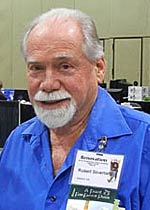 Before I leave off I have to give praise to Planet Stories for their book design. I have already mentioned my affection for the cover art, but what makes the book’s presentation special is the nod to the pulp magazines that inspired Silverberg to write these stories in the first place. From the magazine-style Table of Contents to the ad-filled back pages featuring full-page book art and a retro-style subscription page, this book is an homage to a time when science fiction publishing was so very different than what it is today. I should point out that on the publishing data page it erroneously reports that these stories were previously published separately in Planet Stories magazine. This does not concur with Silverberg’s introduction in which he talks about the untimely (for him) demise of Planet Stories magazine saying, “I never did get a chance to have some grand and gaudy space adventure published in that grand and gaudy magazine”. As mentioned above these stories were published in Science Fiction Adventures magazine. A minor quibble about an otherwise snappy trade paperback.
Before I leave off I have to give praise to Planet Stories for their book design. I have already mentioned my affection for the cover art, but what makes the book’s presentation special is the nod to the pulp magazines that inspired Silverberg to write these stories in the first place. From the magazine-style Table of Contents to the ad-filled back pages featuring full-page book art and a retro-style subscription page, this book is an homage to a time when science fiction publishing was so very different than what it is today. I should point out that on the publishing data page it erroneously reports that these stories were previously published separately in Planet Stories magazine. This does not concur with Silverberg’s introduction in which he talks about the untimely (for him) demise of Planet Stories magazine saying, “I never did get a chance to have some grand and gaudy space adventure published in that grand and gaudy magazine”. As mentioned above these stories were published in Science Fiction Adventures magazine. A minor quibble about an otherwise snappy trade paperback.
And so I leave you with this. Silverberg’s stories are indeed “grand and gaudy”, filled with tropes and trappings that by this era are well worn and sometimes eyed with scorn. But Robert Silverberg is a skilled writer and evidence of that skill is present in these early stories. Where others wrote unrestrained and sometimes incredibly wacky over-the-top pulp, Silverberg concentrated on telling a good story with evidence that he was putting his heart into being a success. Hunt the Space-Witch! is a fun-filled collection of space adventures that open a window to a fascinating period of science fiction history.
GMRC Review: The Stainless Steel Rat
 Editor’s Note: On his blog Stainless Steel Droppings blogger Carl V. Anderson reviews SF/F books and movies, conducts author interviews and even hosts his own reading challenge: The 2012 Science Fiction Experience. What better book for his first Grand Master review than Harry Harrison’s The Stainless Steel Rat?
Editor’s Note: On his blog Stainless Steel Droppings blogger Carl V. Anderson reviews SF/F books and movies, conducts author interviews and even hosts his own reading challenge: The 2012 Science Fiction Experience. What better book for his first Grand Master review than Harry Harrison’s The Stainless Steel Rat?
James “Slippery Jim” diGriz is a master criminal, a stainless steel rat in the wainscoting of society, a society that is becoming increasingly devoid of crime thanks to the successful efforts of the galaxy’s infamous Special Corps. Cocky and self-assured, diGriz goes about his business with rare aplomb, each caper uniquely different so as to stay one step ahead of what passes for the law on whatever planet he happens to find himself located. When a particularly clever theft goes awry, Slippery Jim finds himself a cornered rat in a maze that lands him in the lap of the dreaded Special Corps.
And to make matters worse, the inmates are running the asylum, for the Special Corps is headed by none other than the most famous criminal mastermind ever: Harold Inskipp, aka Inskipp the Uncatchable. Soon DiGriz is presented with an offer he cannot refuse. As the old adage goes, “if you can’t beat ‘em, join ‘em”.
At any rate, it is better than having your mind wiped.
The first of Harry Harrison’s popular Stainless Steel Rat series was published in 1961, although portions of the story saw life in Astounding Science Fiction in 1957 and Analog: Science Fact and Fiction in 1960. Slippery Jim DiGriz is the prototypical anti-hero. Skilled in the art of crime and yet highly moralistic in his respect for life, DiGriz is a step nearer the heroic mold in comparison to those protagonists written by Alfred Bester, for example, in The Demolished Man or The Stars My Destination, and he is the precursor for loveable rogues like Han Solo or Malcolm Reynolds. In Jim DiGriz we see some of the vestiges of the chivalry and honor of the 1950’s coupled with the shifting changes in attitude about government that came about in the 1960’s. In addition The Stainless Steel Rat was somewhat prescient in showing a future where the free and casual use of drugs and alcohol was later born out in the late 60’s and in the 1970’s. In fact, The Stainless Steel Rat sits on a very interesting dividing line by including some of the older, now dated ideas that dominated science fiction in the 40’s and 50’s and other ideas about government and crime and the immensity of space that are relevant today.
In James DiGriz’s universe, a bank of psimen was used to send messages telepathically across light years and the future remained filled with a great deal of paper when it came to the wheels of bureaucracy. Computers used punch cards and destinations were laid into starships using course tapes. At the same time Harry Harrison envisioned space as the kind of massive place that even with largely populated galaxies an enormous warship could be impossible to find and envisioned a future in which women were every bit as clever and capable as men. All these things aside, what makes The Stainless Steel Rat a “vintage” novel that remains worth reading today is that it is a fast-paced, witty, fun story with just enough timely twists and turns that it remains satisfying from start to finish.
 Slippery Jim’s schemes are cunning in their planning and execution even when they do not work out entirely as orchestrated and he soon finds out that to be a really good cop in the Special Corps, it pays to keep the criminal skills in good working order. The Stainless Steel Rat is a quick read and I continue to find it absorbing enough that I wouldn’t hesitate to give it to any young boy or girl looking for a rollicking good science fiction adventure, nor to any adult wanting to read something fun with a hint of nostalgia to it. The story never flags, it is paced beautifully, and the dated elements never get in the way of the action.
Slippery Jim’s schemes are cunning in their planning and execution even when they do not work out entirely as orchestrated and he soon finds out that to be a really good cop in the Special Corps, it pays to keep the criminal skills in good working order. The Stainless Steel Rat is a quick read and I continue to find it absorbing enough that I wouldn’t hesitate to give it to any young boy or girl looking for a rollicking good science fiction adventure, nor to any adult wanting to read something fun with a hint of nostalgia to it. The story never flags, it is paced beautifully, and the dated elements never get in the way of the action.
I fell in love with the world of The Stainless Steel Rat as a pre-adolescent, when Slippery Jim and the lovely Angelina were the kind of characters who excited a young boy’s imagination and stirred his emotions. When I got older and picked up the book to read again I discovered that Harry Harrison did what many try to do and fail–he created an adventure/detective series set in a science fictional universe that has a timeless appeal because it is both smarter and better executed than many novels of the same mold that went before and have come after. Not all of the Stainless Steel Rat books are gems, but the first two especially (The Stainless Steel Rat and The Stainless Steel Rat’s Revenge) form a nice two-part tale that holds up well today from a pure enjoyment factor.
After 3+ decades of being a fan of his adventures, I readily admit to a bias towards (most of) Harry Harrison’s Stainless Steel Rat stories. Yet even in my fanatical devotion, witnessed by the title of my blog, I like to think that I have enough objectivity to see that there is really something here. There is a spark that good older science fiction stories have that keeps them popular to some degree today. Slippery Jim DiGriz will delight you with his escapades and you will walk away with a smile on your face, even if it is a wry smile.



















 Full Details
Full Details

